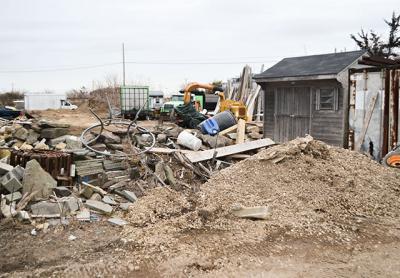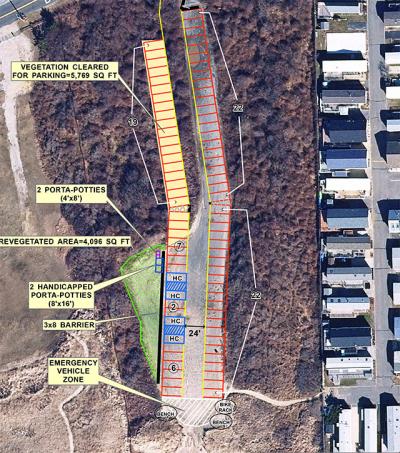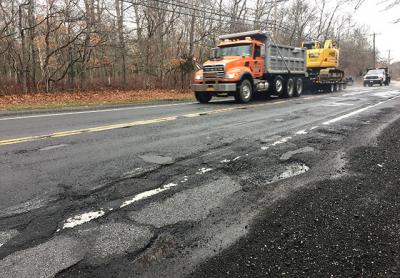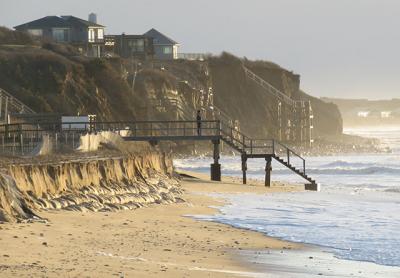Renewed Plea to Protect Stony Hill Aquifer
Renewed Plea to Protect Stony Hill Aquifer

In light of the fall 2017 detection of chemical contamination of more than 100 wells in Wainscott and the recent discovery of concentrations of lead and chemicals in the surface water and aquifer around the Sand Land mine on the Bridgehampton-Noyac border, the president of the advocacy group Amagansett-Springs Aquifer Protection and other residents implored the East Hampton Town Board to act quickly to preclude additional development atop the Stony Hill aquifer in Amagansett.
At the board’s meeting last Thursday, Alexander Peters of Amagansett-Springs Aquifer Protection, who is also on the board of the New York League of Conservation Voters, asked that the board use the community preservation fund to solicit the purchase of some 50 lots atop the aquifer, which provides potable water to northern East Hampton, Amagansett, Springs, Napeague, and most of Montauk. “It’s just incredibly important for the vast majority of the people in our town,” he said.
Mr. Peters, who is known as Sas, read a letter to the board from Assemblyman Steve Englebright, who is chairman of the State Assembly’s committee on environmental conservation. The Stony Hill aquifer recharge area is important to the portion of the upper glacial moraine aquifers that underlie this part of the South Fork, according to Mr. Englebright’s letter, and can provide potable drinking water to East Hampton residents “because it is relatively large, geographically centered within the town, and still lightly developed.” Relatively few potential sources of contamination, its present pristine state, its value as a source of drinking water, and the voter-approved use of a portion of community preservation fund money for water-quality improvement all point to the importance of implementing a plan to preserve the remaining open land atop this part of the glacial moraine, the letter said.
“Freshwater reserves are limited in East Hampton,” particularly east of Amagansett, Mr. Englebright wrote, due to the region’s geology and topography. Further, “Because sea level is rising, the fresh groundwater reserves of the entire town will be significantly diminished in the next 50 to 150 years,” while residential development “is likely to follow the trend of numerous other towns, by gradually transitioning from a mixture of partial and year-round occupancy to almost exclusively year-round use, and thereby create a higher demand for potable
water.”
Should a severe contamination crisis occur elsewhere in the town, the letter continued, the Stony Hill aquifer recharge area “will also be vitally needed” for short-term emergency water supply. “Considering East Hampton’s unique geological and hydrological limitations as well as threats to the future availability of pure drinking water, I believe it is critically important to act now upon the fact that protection of this groundwater catchment area should be a priority.” Additional development, he said, “should be considered to be just as inappropriate and unwelcome as would be any hypothetical houseboat development” atop the Ashokan, Roundout, or Croton reservoirs that supply New York City’s drinking water.
New development at Stony Hill, Mr. Englebright’s letter said, “could be a tipping point,” and he urged “wise utilization of the C.P.F. tool that the State Legislature and the people of the town of East Hampton have provided to preserve and protect, both for now and all time, the clean recharge of rainwater into the Stony Hill aquifer recharge area.”
Richard Smolian of Amagansett also decried “the rapid pace of development that has endangered the aquifer” and lamented the fact that the town had purchased just two lots above it in the last four years. “This must be the year for change,” he said. “With the Democratic town board in command, a program to initiate the purchase of undeveloped land in order to conserve and protect our water supply must now commence.”
Mr. Peters and Mr. Smolian share an unusual bond, one that underscores their mutual aspiration. Mr. Peters bought the lots at 42 and 46 La Foret Lane in Amagansett from Mr. Smolian in 1992 and 1997. He has long sought to sell the 3.5 acres of undeveloped land to the town. The deed to each lot, however, gives Mr. Smolian, along with Randy Smolian, his former wife, Darielle Smolian, his daughter, and Jonathan Smolian, his son, a right to repurchase the land so long as the family retains ownership of an adjacent lot. In April 2015, Mr. Smolian signed an affidavit formally waiving his right of first refusal; while he supports preservation of the land, his family members do not.
Mr. Peters told The Star in December 2014 that the right of first refusal was included in the deeds “for the very simple purpose of making sure that the land was always conserved. I promised Dick I would never develop the land and never have, and now am trying to nail that down forever.”
Mr. Peters said he had offered a settlement of $100,000 to Jonathan Smolian through an intermediary. He refused, and a suit filed in December 2014 claims that he told Mr. Peters “he had enlisted ‘partners’ who he intended to work with in order to develop the property and achieve a substantial profit.” Randy Smolian and Darielle Smolian, the suit alleges, will not waive their right of first refusal unless Jonathan Smolian also does.
Last Thursday, the elder Mr. Smolian told the board that his son “prevailed in his ability to exercise a right of first refusal” on the land he sold to Mr. Peters, preventing its sale to the town, “and that particular dispute is still in a holding pattern that’s going to go on forever. . . . I have thrown my lot in with Sas, and have incurred the wrath of my family to make good on a promise I made over 25 years ago to Sas, to keep the aquifer clean.”
Councilman Jeff Bragman told Mr. Peters and Mr. Smolian that Scott Wilson, the town’s director of land acquisition and management, was “at work already for us” to identify the owners of parcels that the town could potentially acquire with C.P.F. money.
“You’re not going to find anyone here on this side of the board arguing against the importance of our recharge areas within the town,” Supervisor Peter Van Scoyoc told Mr. Peters and Mr. Smolian, “and I thank you for your efforts.”
Mr. Peters said on Monday that he is hopeful that the board will act swiftly. “We’re really hoping the town board gets moving here, and frankly we have a dream team of conservationists on the board now,” he said. “There should be no disagreement. I hope to God they move ahead quickly.”





